The weight of a diamond is normally given in carats. The term carat originated in ancient times when gemstones were weighted against the carob bean. Each bean weighed about one carat. In 1913, carat weight was standardized internationally. One gram is 5 carats, and one ounce is about 142 carats.
The weight of small diamonds can also be described in points, with one point equaling a hundredth of a carat. For example, five points is a short way of saying 5/100 of a carat.
How diamond carat weight can affect value
A diamond’s carat weight is one of the main factors in determining its value, with diamonds are valued on a per-carat basis.
Larger diamonds are rarer, and in higher demand than smaller diamonds of the same quality, so they can be sold for a higher price.
A one-carat diamond solitaire ring is nearly always more expensive than a diamond ring made up of multiple smaller diamonds of similar quality, even if they total one carat or more.
Diamonds that weigh just under a full-number carat weight are typically less expensive than diamonds passing the full-carat hurdle.
A two-carat stone will cost a lot more per carat than a comparable one-carat stone.
This is because diamonds are rarer in larger sizes, so increases in size can mean disproportionate increases in value. As you take a stone of a particular cut, clarity and color and move its carat weight to the next price category, you may see a large increase in the price per carat. This jump gets larger as the carat weight, and thus the rarity, increases.
With an 8 carat diamond ring, carat is of course one of the biggest factors that affect the price, but other considerations like the diamond’s shape, color and clarity can also make a huge difference.
How diamond carat weight can affect cost
The size of a diamond has the single greatest impact on its price, and is expressed in the trade as the price per carat. Although weight has the largest impact on the price of a diamond, not only is that true for the overall price of the stone, but it is also true for the price per carat. That’s why a 2-carat diamond is more than double the price of a similar 1-carat diamond. A diamond of G color and SI1 clarity will be in one category of prices when it is between 0.50 – 0.69 carats.
In other words, the per-carat price will be the same for a G/SI1 diamond of 0.52ct as it would be for a G/SI1 diamond of 0.63ct.
If you know the per-carat price, you simply multiply it by the carat weight. When you take that same quality diamond and increase the size to the next price category, which in this case is the 0.70 – 0.89 carat range, the price increase will be approximately $1,100 per carat. Increase to the 0.90 – 0.99 carat range and the price increase will be approximately another $800 per carat. Increase to 1.00 – 1.49 carat range, and the increase will be approximately another $800 per carat. Increase the carat weight to the 1.50 – 1.99 carat range, and the price increase will be approximately $1,200 per carat. And prices are constantly changing too, in response to market forces.
Carat is the simplest and only truly objective of the 4C’s. Pop a diamond on the scale, and if it weighs 0.200 gm then it is a 1.00 carat diamond. A ‘point’ is 1/100 of a carat so 0.25ct is called 1/4ct, 25 points or 25pt.
Economically, it’s common and tempting for a cutter to leave a little more weight on the crown and pavilion, (the top and the bottom) or the girdle, since it can push the stone to the next ‘magic weight’. Doing this can negatively affect the diamond’s cut quality, and can make it appear dull and lifeless, but some jewelers will count on their customers not noticing. The magic weights are as follows: 1/2ct, 3/4ct, 90 points, 1ct, 1.5ct, 2ct etc. ‘Under-sizes’ are diamonds that weigh just below a magic weight; they can be a bargain, but there are a lot less to choose from.

